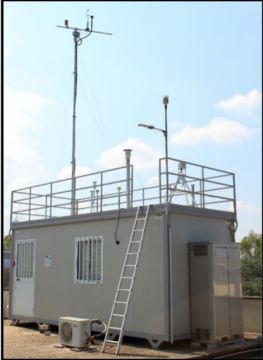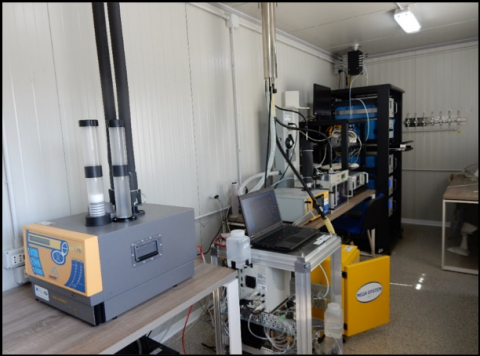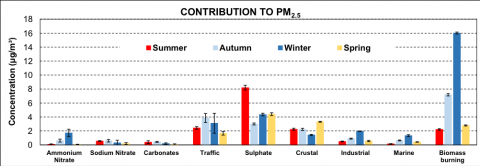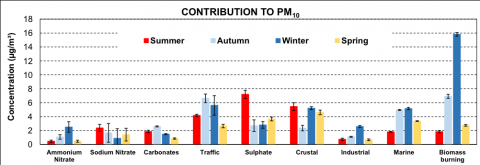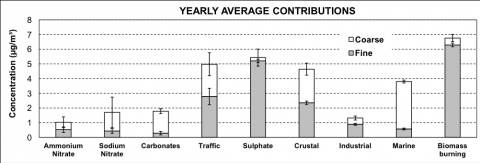Seasonal variability of the contribution of sources to concentrations of atmospheric aerosol in an urban background area of Lecce
j F Y in Uncategorized
A study performed by the research group of ISAC-CNR, in collaboration with the University of Salento, highlighted the seasonal variability of the contribution of different sources (natural and anthropogenic) to atmospheric concentrations of particles with a diameter less than 2.5 microns ( PM2.5) and 10 microns (PM10). This work allowed to highlight the weight of the various sources on fine particulate matter (PM2.5), potentially harmful to human health due to its ability to penetrate the respiratory system, and on the coarse fraction (particles with a diameter greater than 2.5 micron).
The study, published in Science of the Total Environment [1], was carried out using data from the Environmental-Climate-Observatory (ECO, Figure 1.1) realized in Lecce as part of the PON I-Amica project (www.i-amica.it).
Fig. 1.1) The Environmental-Climate-Observatory (ECO) of Lecce, regional station of Global Atmosphere Watch (GAW-WMO) network.
Results showed higher PM2.5 and PM10 concentrations in the cold period (autumn and winter) compared to the warm period (spring and summer), with a seasonal variability of the chemical composition that allowed evaluating the variability of the contribution of the different sources using advanced statistical methods (Figure 1.2). The increase of concentrations in the cold period is largely due to greater anthropogenic emissions from vehicular traffic and biomass burning, the latter being an important source in the study area. The combustion of biomass includes different types of emissions such as domestic heating, agricultural practices and fires and is a source characterized by a very heterogeneous chemical profile that includes organic carbon compounds (including polycyclic aromatic hydrocarbons – PAHs), elemental carbon that is similar to black carbon, one of the components of the aerosol most influential on the climatic effects but which also has significant effects potentially harmful to human health, potassium and trace metals. The impact of biomass burning on the concentrations of atmospheric aerosol is lesser in the summer but not negligible and is therefore one of the most relevant sources at the measurement site. It is important to observe how the contribution of the different sources is divided into the fine (PM2.5) and the coarse fraction (Figure 1.3). The contribution of biomass burning is mainly composed of fine particles with a distribution similar to industrial emissions and secondary-origin sulphates. The latter are not emitted directly from the sources but are formed in the atmosphere as a result of chemical reactions (more effective in the hot period) of SO2 gas (mainly emitted in industrial processes, in maritime transport and in the combustion of heavy oils). The particles emitted by biomass burning therefore have a potential relevant impact on health as they can more easily penetrate the respiratory system than the coarse particles that represent an important part of the contribution of natural sources such as marine aerosol, the crustal matter and carbonates from the soil.
Fig. 1.2) Seasonal variability of sources contribution to PM10 (up) and PM2.5 (down).
Fig. 1.3) Average annual distribution of the sources contributions between fine (PM2.5) and coarse fraction (diameter greater than 2.5 microns).
[1] ‘Seasonal variability of PM2.5 and PM10 composition and sources in an urban background site in Southern Italy’, D. Cesari, G.E. De Benedetto, P. Bonasoni, M. Busetto, A. Dinoi, E.Merico, D. Chirizzi, P. Cristofanelli, A. Donateo, F.M. Grasso, A. Marinoni, A. Pennetta, D. Contini, Science of the Total Environment 612, pp. 202–213, 2018, http://dx.doi.org/10.1016/j.scitotenv.2017.08.230.






